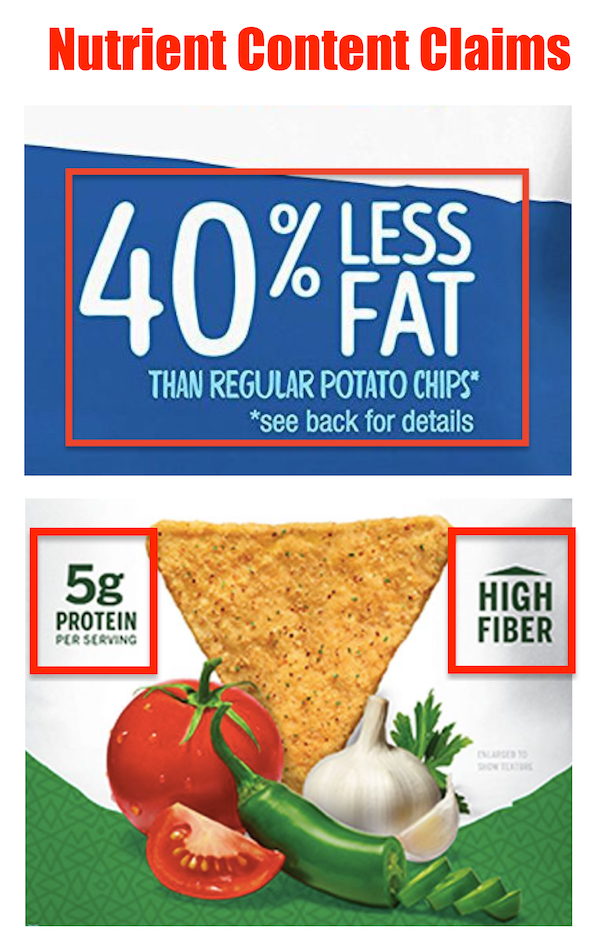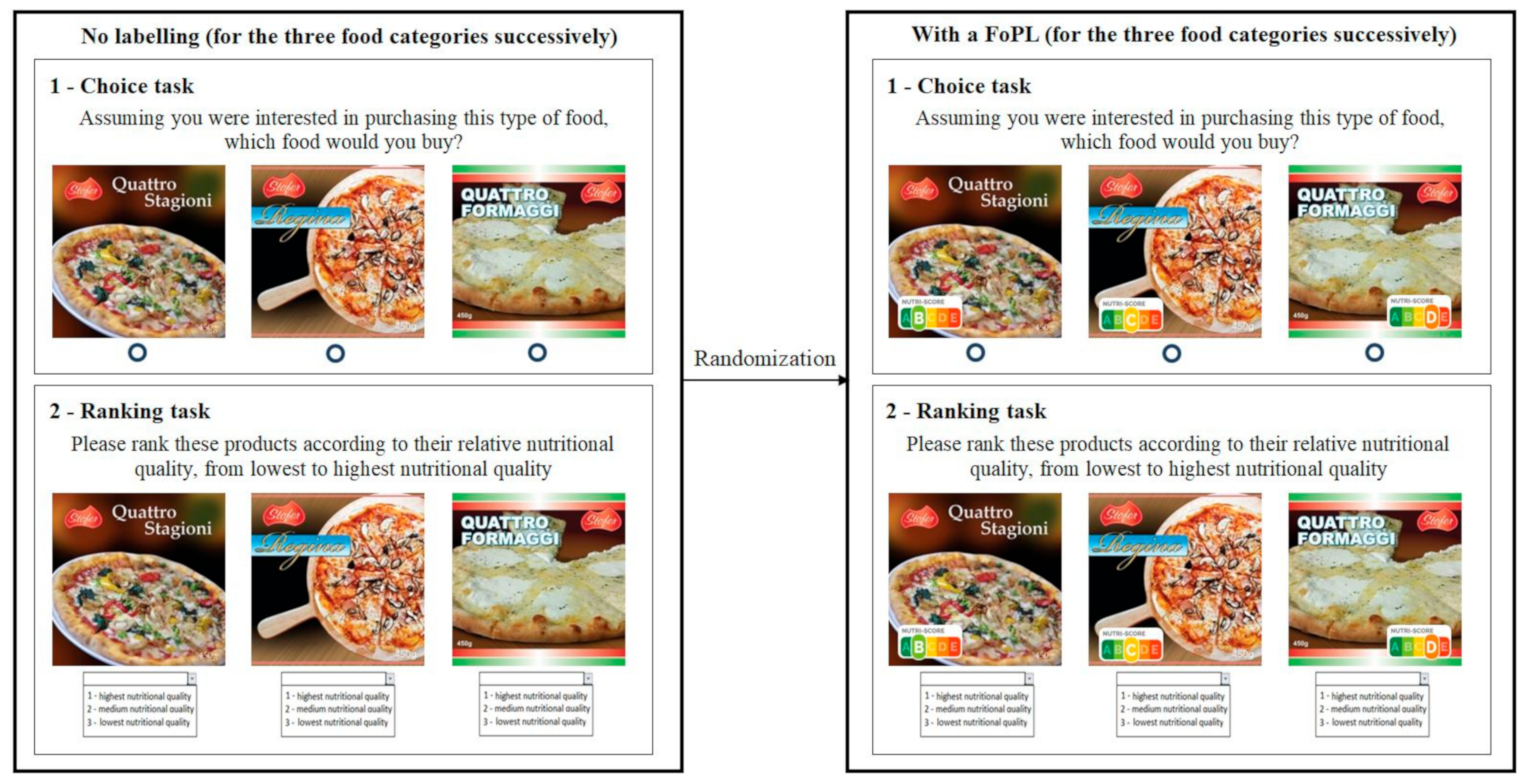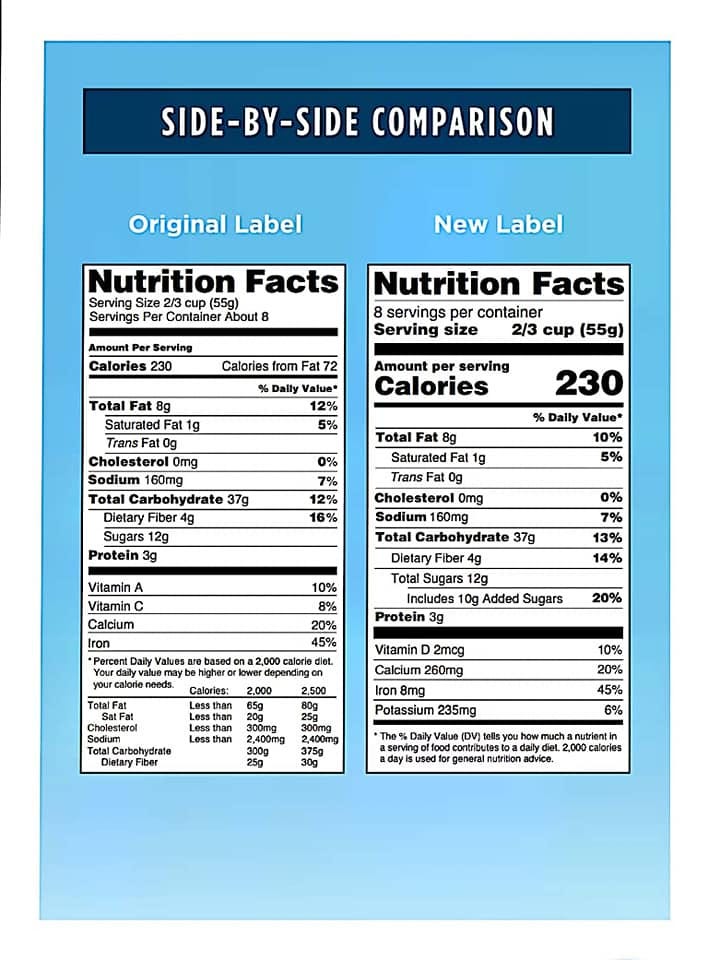38 nutrient content claims on food labels
History of Nutrition Labeling - Front-of-Package Nutrition ... Nutrients to be listed on nutrition labels included calories, calories from fat, total fat, saturated fat, cholesterol, sodium, total carbohydrate, dietary fiber, sugars, protein, vitamins A and C, calcium, and iron. Nutrient Claims on Food Labels - Truly Good Foods Nutrient Claims on Food Labels July 19, 2018 Nutrient claims describe the content of a food, including the amount of nutrients, calories, cholesterol or fiber, but not in exact amounts. Usually on the front of the food label, the nutrient claim provides a quick comparison between similar products.
21 CFR § 101.65 - Implied nutrient content claims and ... (a) General requirements. An implied nutrient content claim can only be made on the label and in labeling of the food if: (1) The claim uses one of the terms described in this section in accordance with the definition for that term; (2) The claim is made in accordance with the general requirements for nutrient content claims in § 101.13; and (3) The food for which the claim is made is labeled ...

Nutrient content claims on food labels
Nutrient Content - an overview | ScienceDirect Topics A nutrient content claim either expressly or implicitly characterizes the level of a nutrient in a product (e.g., "high in vitamin C" or "low in sodium"). In general, nutrient content claims cannot be used in food labeling unless the claim is made in accordance with existing FDA regulations or an authoritative statement by a scientific body. Nutrient content claims - Canadian Food Inspection Agency Omega-3 and omega-6 polyunsaturated fatty acid claims. Cholesterol claims. Sodium (salt) claims. Potassium claims. Carbohydrate and sugars claims. Dietary fibre claims. Vitamin and mineral nutrient claims. "Light" claims. Comparative nutrient content claims. Federal Register :: Food Labeling: Nutrient Content Claims ... The Food and Drug Administration (FDA, the Agency, or we) is issuing this rule to prohibit certain nutrient content claims for foods, including conventional foods and dietary supplements, that contain omega-3 fatty acids, based on our determination that such nutrient content claims do not meet the requirements of the Federal Food, Drug, and ...
Nutrient content claims on food labels. › scripts › cdrhCFR - Code of Federal Regulations Title 21 - Food and Drug ... Jan 06, 2022 · (b) Label statements that are not implied claims. Certain label statements about the nature of a product are not nutrient content claims unless such statements are made in a context that would make them an implied claim under § 101.13(b)(2). The following types of label statements are generally not implied nutrient content claims and, as such ... Nutrient Content Claims on a Food Label - LabelCalc Spotting Nutrient Content Claims. When you look at a food label, several statements can be made on the front of the panel to grab the attention of the consumer and inform them that the food product contains nutrients and health benefits that may speak to their personal dietary lifestyle. Nutrient Content Claims - FDA Nutrient Content Claims. See Claims That Can Be Made for Conventional Foods and Dietary Supplements for definitions of claims. Final Rule: Food Labeling: Nutrient Content Claims; Alpha-Linolenic ... Nutrition content claims and health claims - Food Standards Nutrition content claims are about the content of certain nutrients or substances in a food, such as 'low in fat ' or 'good source of calcium'. These claims need to meet certain criteria. For example, food with a 'good source of calcium' claim needs to contain at least the amount of calcium specified in the Standard. Health claims
› how-to-read-food-labelsHow to read food labels - healthdirect Energy: A kilojoule is a measure of energy. To lose weight, you need to eat and drink fewer kilojoules (kJ) than you use. You should limit your intake of discretionary or junk foods — i.e. those that have more than 600kJ per serve. Nutrition claims - Food Safety A claim that a food is high in omega-3 fatty acids, and any claim likely to have the same meaning for the consumer, may only be made where the product contains at least 0,6 g alpha-linolenic acid per 100 g and per 100 kcal, or at least 80 mg of the sum of eicosapentaenoic acid and docosahexaenoic acid per 100 g and per 100 kcal. Food Label Claims: What You Can and Can't Trust - WebMD Food labels are meant to inform us. But often, they simply confuse us. The best way to make good nutritional choices is to know what the information means and what claims you can trust. eCFR :: 21 CFR 101.54 -- Nutrient content claims for "good ... (B) Quantitative information comparing the level of the nutrient in the product per labeled serving with that of the reference food that it replaces (e.g., "Fiber content of white bread is 1 gram (g) per serving; (this product) 3.5 g per serving") is declared adjacent to the most prominent claim or to the nutrition label, except that if the ...
sentientmedia.org › misleading-food-labels13 Misleading Food Label Claims and How Not to Be Tricked Oct 20, 2021 · The Food and Drug Administration (FDA) provides guidelines for a variety of common food labels, including sugar-free. While the term suggests that products labeled this way would be completely free of sugar, they can actually contain up to 0.5 grams of sugar in a single serving size. › food › food-labeling-nutritionLabel Claims for Food & Dietary Supplements | FDA Among the claims that can be used on food and dietary supplement labels are three categories of claims that are defined by statute and/or FDA regulations: health claims, nutrient content claims,... Understanding Food Labels and Health Claims - Nutrition ... This label is called a Nutrition Facts panel, which gives information on the number of servings per container, the number of calories per serving, and certain nutrients. Specifically, it lists the macronutrients and four of the most important micronutrients people need to pay special attention to, such as Vitamin D, Calcium, Iron, and potassium. 21 CFR § 101.13 - Nutrient content claims - general ... (1) nutrient content claims that have not been defined by regulation and that are contained in the brand name of a specific food product that was the brand name in use on such food before october 25, 1989, may continue to be used as part of that brand name for such product, provided that they are not false or misleading under section 403 (a) of …
Regulating health claims on food labels using nutrient ... Nutrition composition and ingredients were collected from the packaging, enabling nutrient profiling. The proportion of products in each category carrying claims and the proportion of these that did not meet the nutrient profiling criteria were calculated. Results: Of those carrying health claims, 31 % did not meet the nutrient profiling criteria.
Status of Nutrition Labeling, Health Claims, and Nutrient ... Based on label information from a final sample of 1,267 food products, FDA determined the percentage of products sold that bear Nutrition Facts labels, health claims, and nutrient content claims. The purpose of this article was to present FDA findings regarding the status of food labels 3 years after implementation of the nutrition labeling rules.
Understanding Food Labels | The Nutrition Source | Harvard ... Under the Food Allergen Labeling and Consumer Protection Act of 2004, eight major food allergens—milk, fish, tree nuts, peanuts, shellfish, wheat, eggs, and soybeans—are required to be listed in a "contains" statement near the Ingredients list if present in a food. An example would be "contains wheat, milk, and soy."
› understanding-food-labelsUnderstanding food labels - Canada.ca Find information on food labels and how to understand them. Learn about nutrition facts tables, serving size, list of ingredients, % daily value and nutrition claims.
Making a nutrient content claim on food labels - Food ... Claims made on labels of small packages Claims made on foods prohibited from showing a nutrition facts table In some cases, nutrient content claims are found on foods that hold exemptions or prohibitions from showing a Nutrition Facts table. Making a claim on these products triggers certain labelling requirements:
Nutrition, health and related claims - Food Standards Standard 1.2.7 - Nutrition, health and related claims in the Food Standards Code (the Code) set out requirements for making nutrition content and health claims about food. Find out more about the Standard and the different types of claims. The Implementation Subcommittee for Food Regulation (ISFR) has guidance on how to comply with Standard 1.2.7.
Nutrient Content Claim vs Health Claim - LabelCalc Nutrient content claims, which are commonly used on food labels, either refer to the amount of a nutrient in a product or compare the levels of a nutrient in that food to a similar reference food. When referring to the amount of a nutrient in a product, words such as "low," "free," and "high" are often used.

Factual Food Labels: Health Claims - UT Austin 100% Online Master of Science in Nutritional Science
What are Nutrient Content Claims on food labels ... Nutrient Content Claims on Food Panels. List energy, fat, carbohydrates, protein, and sodium. The nutritional information panels are a better guide than advertising. If the product contains food-inducing allergens, the label must say so. Some of the healthiest foods don't have labels, including fresh fruit and vegetables, and fish.

Avoid the dairy - the alternatives are amazing! | Seize the day with Team Reid, powered by Juice ...
Nutrient Claims on Food Labels | Home & Garden Information ... Sodium content cannot exceed 360 mg per serving for individual foods and 480 mg per serving for meal-type products. If a food is labeled "healthy" or makes a health claim, it cannot contain any nutrient that increases the risk for disease. It must contain no more than 20% of the DV per serving of total fat, saturated fat, cholesterol, or sodium.
inspection.canada.ca › food-label-requirementsFunction claims - Health claims on food labels - Food label ... Companies wanting to make function claims must have scientific evidence to validate the claim prior to its use on food labels or in advertisements. This evidence may be used by the CFIA, in collaboration with Health Canada, to evaluate product compliance with the Food and Drugs Act and Regulations.
Factual Food Labels: Health Claims - University of Texas ... Nutrient Content Claims. In 1990 under the same Nutrition Labeling and Education Act, nutrient content claims were also allowed on food packaging. This type of claim describes the nutritional content and nutrient levels of the food product in comparison to the accepted standard of the product.
Food Packaging Claims - American Heart Association "Nutrient content claims" are used for two purposes: To describe the level of a nutrient in the product using terms such as free, high, and low or To compare the level of a nutrient in a food to another food using terms such as more, reduced, and lite.
The Effects of Nutrition Knowledge on Food Label Use: A ... Typically, food label use studies focus on nutrition labels; however, ingredient lists and health/nutrient claims also play important roles in conveying the products' diet and health information to consumers and, for this reason, are regulated in the US by the Food and Drug Administration (FDA).
› regulatory-information › search-fdaSmall Entity Compliance Guide: Trans Fatty Acids in ... - FDA This Small Entity Compliance Guide restates in plain language the final rule on the “Food Labeling: Trans Fatty Acids in Nutrition Labeling, Nutrient Content Claims, and Health Claims (68 FR ...
Nutrient content claims: what they mean - Canada.ca Table of nutrient-content claims and what they mean. The food provides an amount of a nutrient that is so small it likely won't have any effect on your body. The food is processed/modified so that it contains at least 25% less of the nutrient when compared with a similar product. Contains no added fats or oils or added butter or ghee, or ...







Post a Comment for "38 nutrient content claims on food labels"